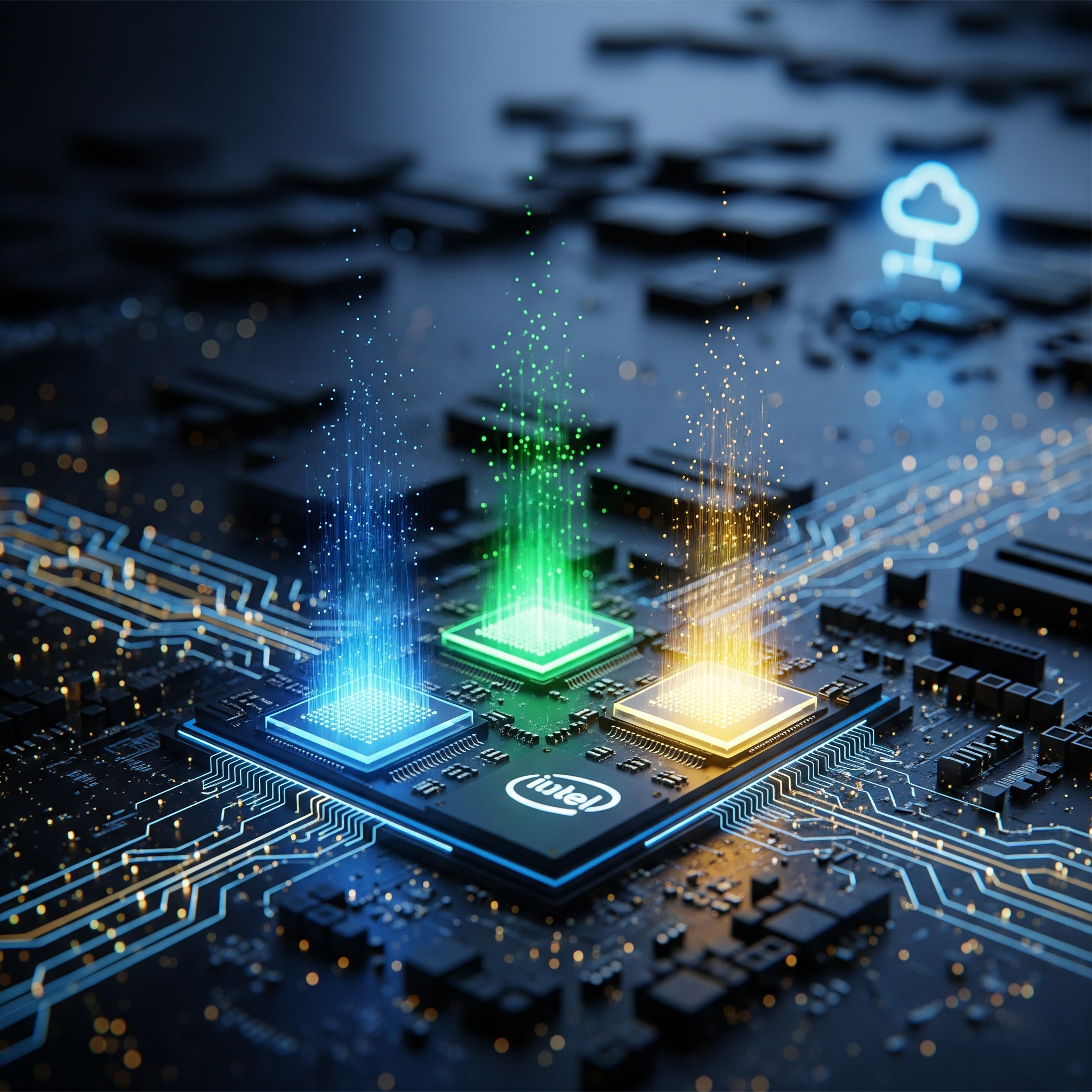AI Implementation in Intel Core Architecture: Transforming the Future of Computing

Artificial Intelligence (AI) is no longer just a buzzword—it’s at the heart of modern computing. From powering real-time language translation to optimizing data center workloads, AI requires hardware that can handle massive amounts of data efficiently. Intel’s Core architecture has steadily evolved to integrate AI capabilities, making everyday devices smarter, faster, and more adaptive.
The Shift Toward AI-Native Processing
Traditional CPUs were designed for general-purpose computing—running applications, operating systems, and basic workloads. However, AI workloads such as deep learning, image recognition, and natural language processing are computationally intense. They rely heavily on parallel operations that are not always optimal on conventional CPU cores.
To bridge this gap, Intel began embedding AI acceleration features directly into its Core architecture. This shift allows consumer laptops, desktops, and even edge devices to execute AI tasks that were previously reserved for dedicated GPUs or specialized accelerators.
Key AI Features in Intel Core Processors
1. Intel Deep Learning Boost (DL Boost)
Intel introduced DL Boost, a set of new instruction sets (notably VNNI – Vector Neural Network Instructions) in its Core processors. DL Boost accelerates common deep learning tasks like inference in convolutional neural networks (CNNs). By improving throughput, DL Boost enables faster object detection, speech recognition, and recommendation engines—all on standard CPUs.
2. Integrated Neural Processing Units (NPUs)
The latest generations of Intel Core Ultra processors include AI-optimized NPUs. These NPUs offload machine learning tasks from the CPU and GPU, offering higher efficiency and lower power consumption. For mobile devices, this means longer battery life and smoother AI-driven applications, such as background noise suppression or real-time image enhancements in video calls.
3. Hybrid Architecture for AI Workloads
With Intel’s Performance (P-cores) and Efficiency (E-cores) design, Core processors balance demanding AI computations with energy efficiency. For instance, while P-cores might handle high-intensity AI inference, E-cores can manage background AI-driven processes like predictive text, adaptive performance tuning, or even thermal optimization.
4. GPU and AI Integration
Intel’s Xe integrated graphics and Intel Arc GPUs complement AI acceleration. These GPUs include support for frameworks like TensorFlow, PyTorch, and ONNX Runtime, enabling developers to scale AI applications across CPU, GPU, and NPU seamlessly.
Real-World Applications
- Content Creation: AI-driven photo editing, video upscaling, and generative tools run faster with integrated AI accelerators.
- Gaming: Features like AI-based resolution scaling (XeSS) improve performance while maintaining visual fidelity.
- Productivity: From background blur in video conferencing to smart document summarization, AI workloads enhance day-to-day efficiency.
- Edge & IoT: AI processing directly on-device reduces latency and enhances privacy by minimizing reliance on cloud services.
Developer Ecosystem
Intel supports AI development with tools like OpenVINO, which allows developers to optimize models for Intel hardware, and oneAPI, which simplifies cross-architecture programming. This ecosystem ensures that software can fully leverage Intel’s AI hardware features without needing extensive rewrites.
The Road Ahead
As AI becomes a baseline requirement for modern computing, Intel’s Core architecture will continue integrating more specialized AI engines. Future CPUs may blend CPU, GPU, and NPU capabilities even tighter, creating a true AI-native platform that supports everything from generative AI assistants to autonomous systems.
Final Thoughts
Intel Core architecture’s AI integration represents a major leap forward in personal and professional computing. By embedding AI acceleration at every level—CPU, GPU, and NPU—Intel enables users to harness advanced AI capabilities without relying solely on the cloud or external hardware. The result: smarter, more efficient computing experiences that scale across industries.
